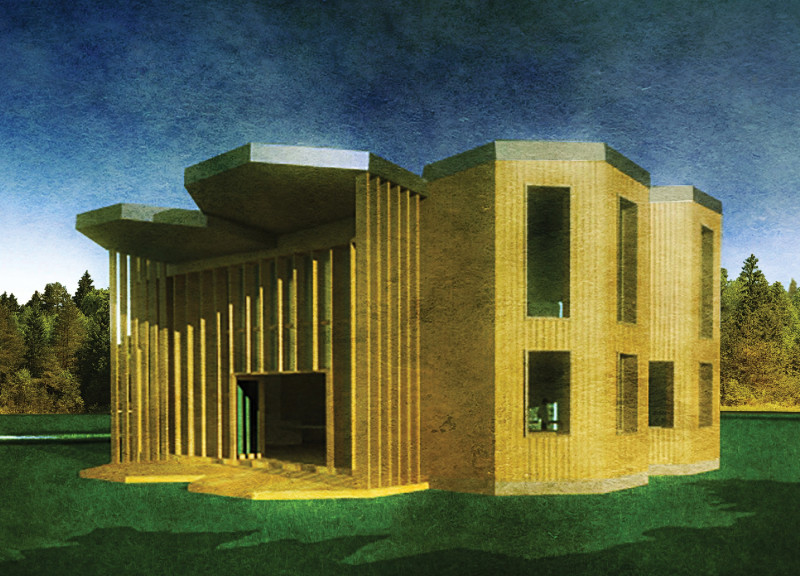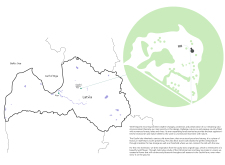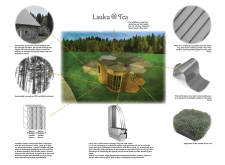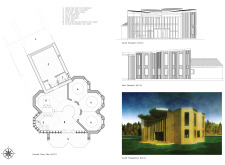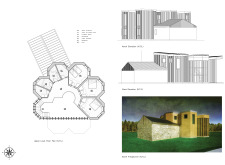5 key facts about this project
The architectural design in Ozolini, Latvia, is a thoughtful blend of historical and contemporary elements. Located in a region known for its beautiful forests and rivers, the project aims to serve as a space for ecotourism and relaxation. The design concept prioritizes the preservation of a century-old stone barn while also integrating modern functions that cater to visitors. By connecting the past with present needs, the design creates a balanced and functional environment.
Historical Preservation
At the heart of the design is the existing stone barn, a significant part of the local heritage. Its thick walls offer excellent insulation, making it suitable for tea storage. This practicality is enhanced by reducing the barn's overall footprint, which will lower the roof height in harmony with the new structure. This alteration respects the original design while allowing for new uses and improvements.
New Architectural Elements
Inspired by the Lauka tea's original logo, which resembles a wildflower, the design introduces a new extension that embodies seasonal change and growth. This floral motif is a central theme throughout the design, promoting a space that fosters wellbeing. Areas for yoga and communal activities are placed to the south, taking advantage of the sunlight for warmth and light. This careful orientation helps create a welcoming environment.
Sustainability Strategies
Sustainability plays an important role in the project’s design and material choices. The structure will utilize sustainably sourced, FSC-certified hardwood, which is a responsible choice for building. The absence of glue and metal connections in the timber construction supports environmental goals. Additionally, high-performance, low U-factor windows are included in the design, which aids in energy efficiency and ensures comfort for those inside.
Interactions with Nature
The project also integrates vegetation into the roof design, allowing the building to blend better with its surroundings. This green addition enhances the visual appeal while supporting local ecosystems. By incorporating nature into the architecture, the design encourages a closer connection between people and the landscape.
Attention to these details merges functional requirements with environmental awareness, setting a path for thoughtful engagement with both built and natural environments.


